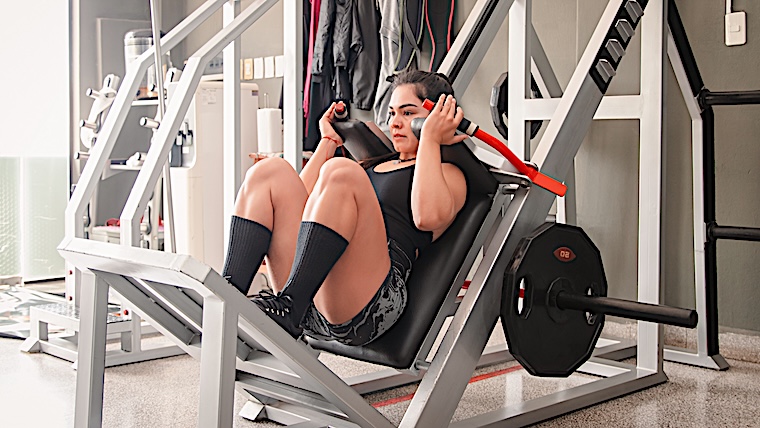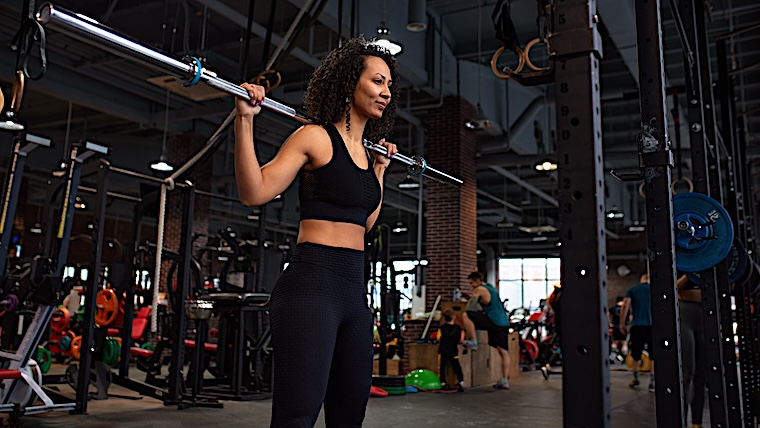Gym machines effectively build strength by isolating muscle groups and offering greater stability than free weights. However, some gym machines come with inherent safety risks. Dr. Mike Israetel outlined concerns with specific machines that may pose potential dangers and how to navigate them during workouts.
The gym is a relatively safe environment, especially compared to the risks associated with competitive sports. This is mainly because the gym offers a controlled setting for managing most variables.
The primary dangers stem from improper use of equipment rather than the equipment itself, making proper technique and awareness key to staying safe.
In the gym, typically, you’re not laying up with the leg press. Everything happens slowly and under meticulous control,” Dr. Israetel said.
5 Most Dangerous Gym Machines
- Vertical Leg Press
- Smith Machine
- Hack Squat
- Monolift
- Power Rack
Vertical Leg Press
The vertical leg press machine is relatively uncommon — and for good reason. It poses a significant risk of injury by placing exceptionally high forces on the spine while the back is rounded. While those highly accustomed to using it may avoid issues, most are not, which often leads to back problems.
In addition to the injury risk, the vertical leg press offers a limited range of motion for the quads, making it less effective. A safer and more effective alternative is the 45-degree leg press machine, which provides extensive engagement of the quads without the same potential for harm.
Smith Machine
Dr. Israetel challenged the belief that the Smith machine is inherently safer than a regular barbell. It can lead to lifting off-center, which causes significant joint strain. Getting pinned under a Smith machine bench press can be particularly dangerous, as there’s no easy way to escape once you can no longer lift. With a regular bench press, however, it’s possible to dump the weights to the sides.
To mitigate these risks when using a Smith machine, properly center yourself — side-to-side and front-to-back — before lifting.
Hack Squat
The hack squat machine is more challenging at the bottom of the movement than at the top. Pushing out of the bottom position can pose a significant challenge, particularly during heavy, low reps in reserve sets. To overcome this, having one or two spotters is a practical and effective solution.

Monolift
The monolift is not often encountered in most commercial gyms. It features hooks that securely hold the bar, allowing the lifter to unrack it without walking out the barbell. This setup is better for handling hefty squats.
However, the monolift presents a unique challenge: once the hooks swing out, the lifter is lifts alone. It’s wise not to jump in unprepared for those unfamiliar with this machine.
Have some respect because the monolift can put you in the ground.
—Dr. Israetel
Modern monolifts have chains and belts designed to catch the weight, ensuring greater safety during lifts.
Power Rack
A power rack is excellent for barbell lifts, deadlifts, and squats. It allows heavy lifts and applies significant force. However, the rack doesn’t track the weight during lifts, sometimes leading to an off-center position. To maximize a power rack, perfect your technique and have a spotter available.
UMaximize Safety & Minimize Risk
Here are five tips to minimize risk:
- Stable Technique
- Control Eccentrics & Rebounds
- Do Warm-Ups
- Increase Weights Slowly
- Avoid Going Overboard
Stable Technique
A stable technique ensures that every rep is executed consistently, mirroring the previous one. “I don’t mean identical, but very similar,” Dr. Israetel noted.
Doing every repetition differently for the same exercise can disrupt the body. When the body becomes accustomed to a stable technique, it adapts to the consistent forces, building resilience against them. However, when forces vary unpredictably with each movement, the risk of improper form increases, which can lead to joint and connective tissue problems.
Control Eccentrics & Rebounds
Controlling the eccentric phase of a bench press significantly lowers the risk of injury. You can maintain better form and reduce strain by engaging your muscles to drop the weight smoothly and pausing briefly at the bottom before pressing back up.
Warm-Up
Warming up doesn’t need to be time-consuming. (1) A few light sets can be effective. “Take your 30-rep max and do 12 with it,” Dr. Israetel prescribed. After a few minutes, take your 20-rep max and do a set of eight with it. Take your 10-rep max and do a set of four with it. You’re ready to go.”

The length of a warm-up can be adjusted based on the type of lift you’re preparing for — whether it’s a heavy, high-intensity lift or a lighter one with minimal weight.
Increase Weights Slowly
When weight training, it’s not necessary to increase the weights dramatically. Instead, steadily progress by adding a small amount of weight to each weekly lift.
Progress by 2.5, five, or 10-pound increments, depending on how big the lift is,” Dr. Israetel recommended. “The more weight you’re lifting, the higher the amount of weight.”
Avoid Going Overboard
To reduce the risk of injury, focus on a different muscle group than the muscle group trained the day before. Avoid the temptation to ego lift. Prioritize proper form and long-term progress over momentary displays of strength.
Final Word
Dr. Israetel assured that these machines can be used safely if proper precautions are taken. Minimizing the risk of injury relies on gradually increasing the load, warming up thoroughly, maintaining a consistent and controlled technique, and avoiding overexertion.
More Bodybuilding Content
- Breon Ansley Commits to 2025 Classic Physique Olympia
- Nick Walker’s 7-Exercise Push Day Goes Light on Heavy Weights
- A Pro Bodybuilder’s Fat Loss Breakfast Hacks
Reference
- Fradkin, A. J., Zazryn, T. R., & Smoliga, J. M. (2010). Effects of warming-up on physical performance: a systematic review with meta-analysis. Journal of strength and conditioning research, 24(1), 140–148. https://doi.org/10.1519/JSC.0b013e3181c643a0
Featured image via Shutterstock/MARVIK